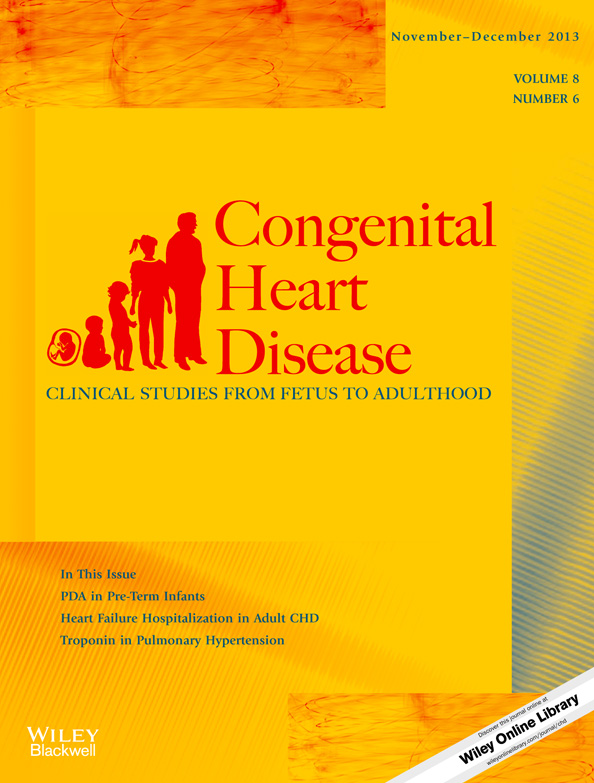Echocardiographic Diagnosis and Transcatheter Occlusion of Pulmonary Arteriovenous Fistula in Cyanotic Newborn
Abstract
Pulmonary arteriovenous malformation (PAVM) is a rare cause of cyanosis in newborn. A 12-day-old male newborn (2.8 kg) was referred to our hospital with the complaints of cyanosis and respiratory distress. On two-dimensional echocardiography, the right pulmonary artery (PA) appeared larger than left PA and the left atrium, left ventricle were dilated. The right heart chambers were in normal limits. A color flow Doppler echocardiogram revealed a turbulent flow due to a PAVM originating from medium branch of right PA, and continuous wave Doppler showed continuous flow pattern. Agitated saline injection resulted in the delayed appearance of the contrast in the left-side chambers three to four heart cycles after appearance in the right-side chambers; the study was considered positive and indicative of an intrapulmonary shunt. Selective angiography of the right PA confirmed the diagnosis of a large solitary PAVM in the right middle lobe with a feeding artery. Amplatzer vascular plug I, which is designed to close abnormal vascular structures, was chosen to close the PAVM. The deployment of device performed safely and the oxygen saturation of baby increased to 95% immediately after deployment. Heart failure and respiratory distress also resolved after the procedure.




